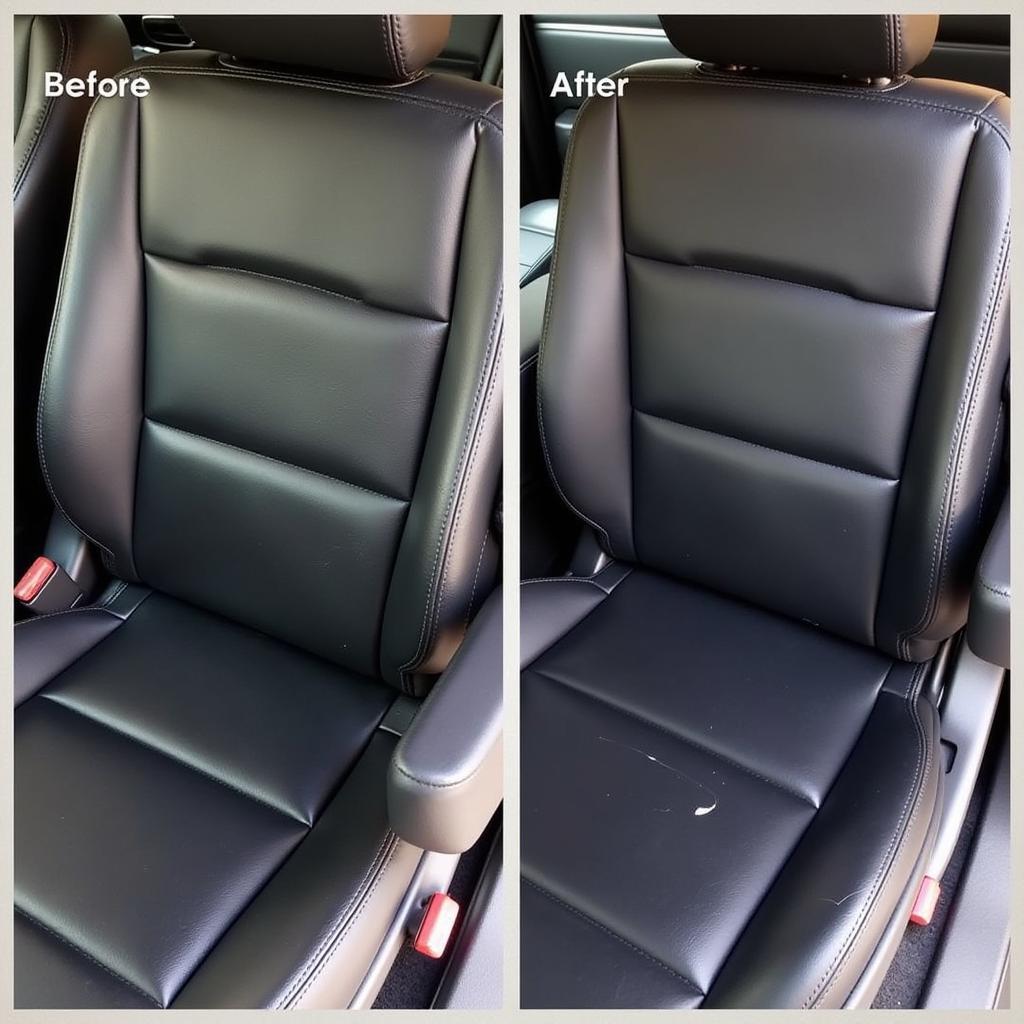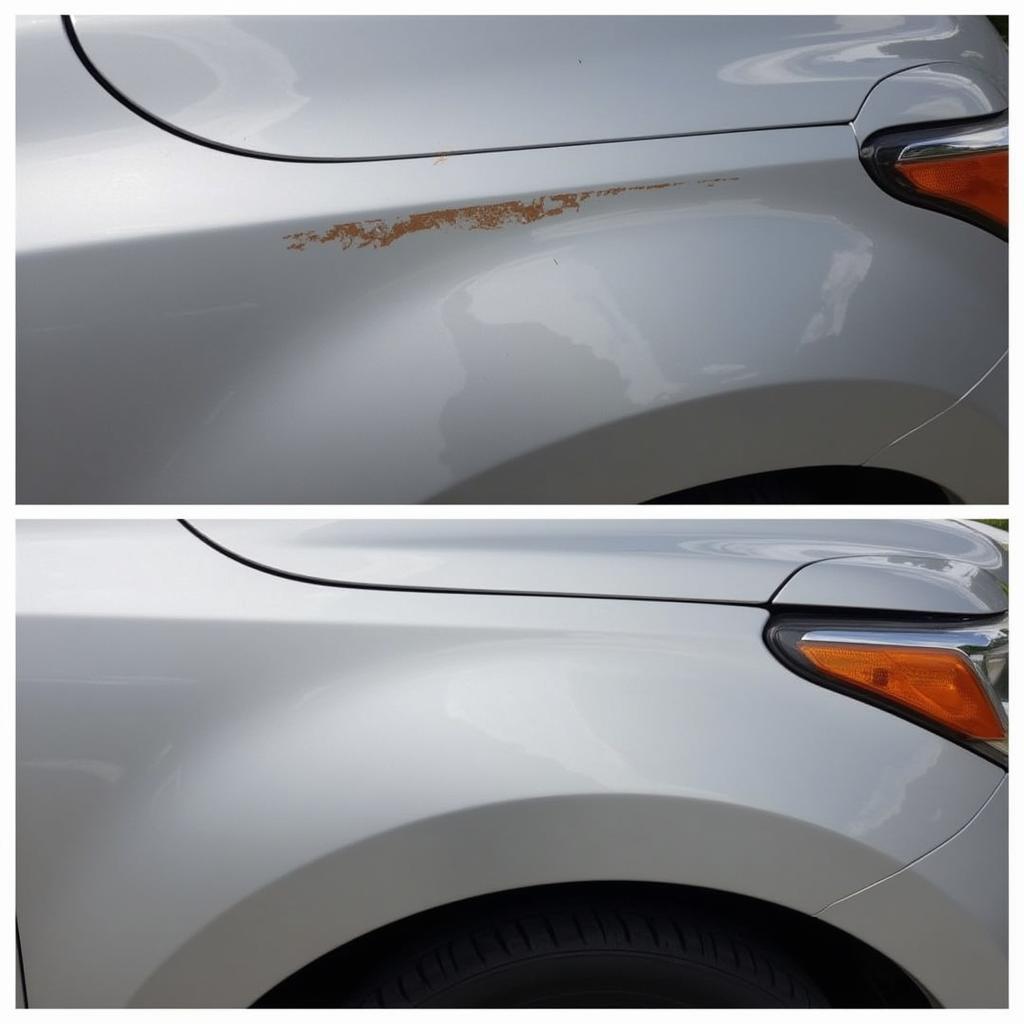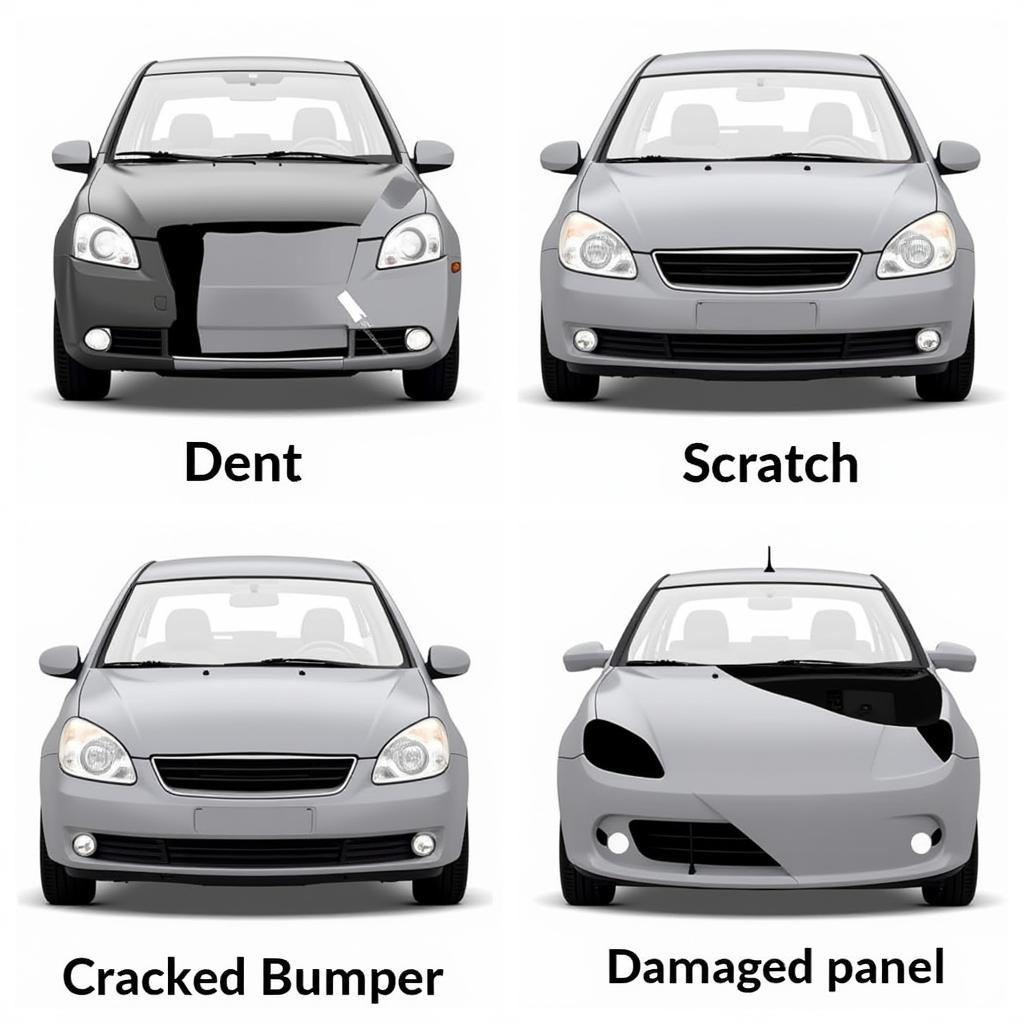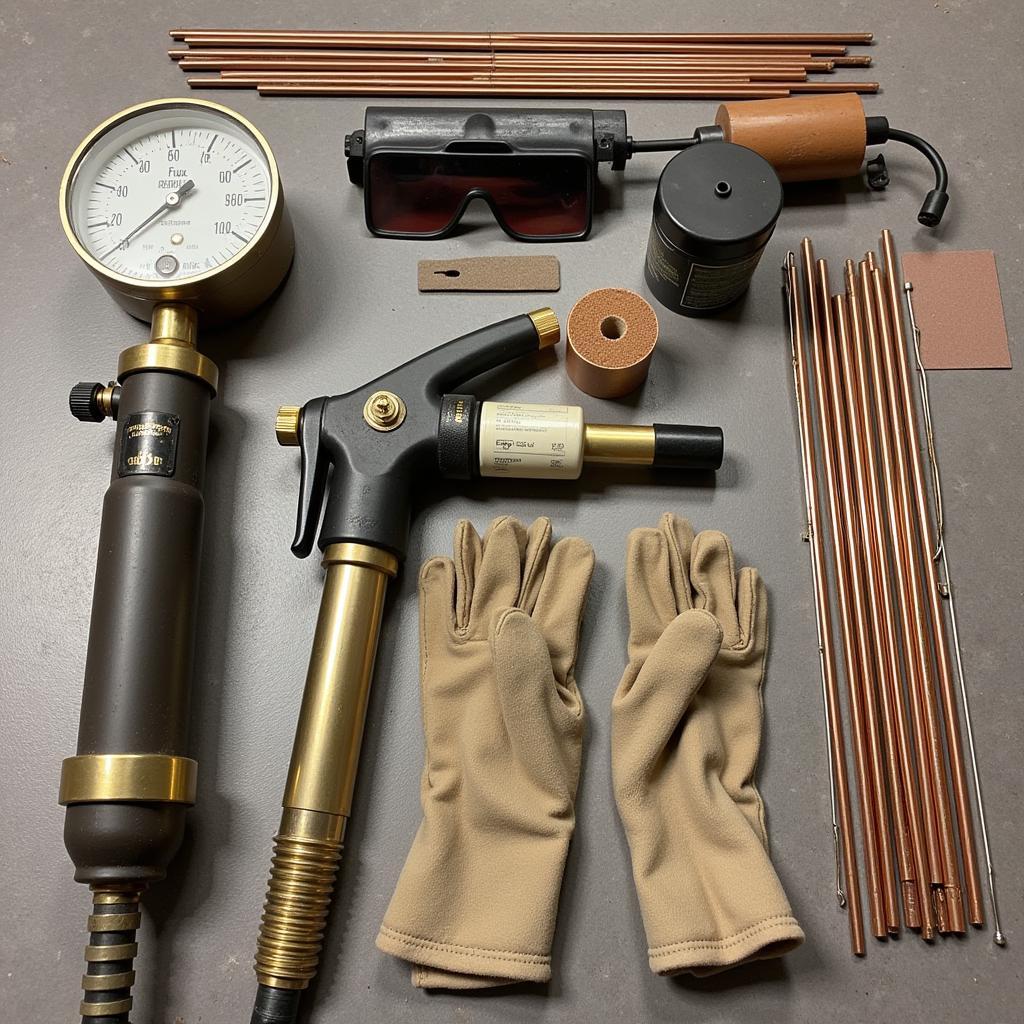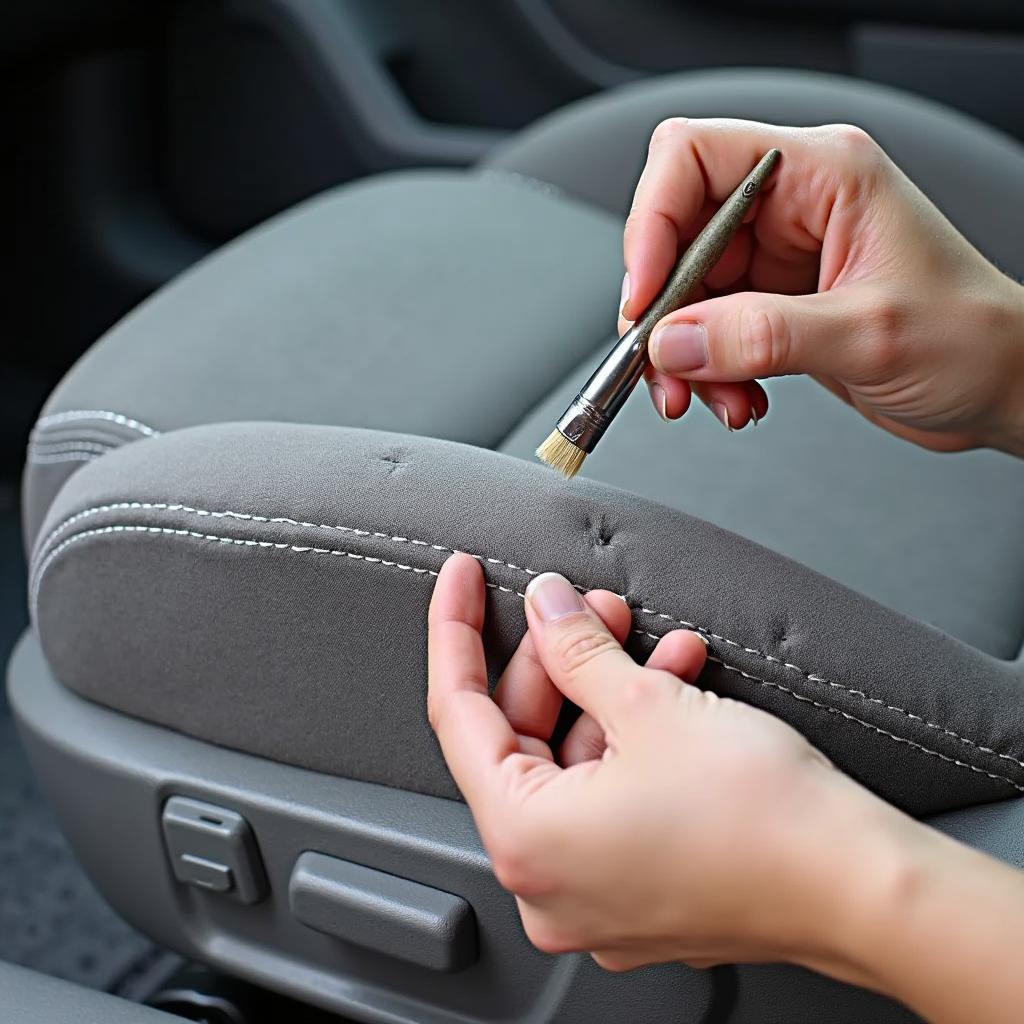
Repairing a fabric car seat
A torn, stained, or burned fabric car seat can make your car’s interior look worn and outdated. While some damage might require professional attention, many common issues can be repaired at home with the right tools and techniques. This guide will walk you through the steps on How To Repair A Fabric Car Seat and restore its former glory.
 Repairing a fabric car seat
Repairing a fabric car seat
Assessing the Damage: Know Your Enemy
Before diving into the repair process, it’s crucial to assess the type and severity of the damage. This will help you determine the best repair method and the right tools for the job.
- Tears and Rips: These are common occurrences, often caused by sharp objects or general wear and tear. Small tears can often be fixed with adhesive patches or sewing techniques, while larger rips might require patching with fabric.
- Burns: Cigarettes and hot objects can leave unsightly burn marks. Minor burns can sometimes be disguised with fabric markers or patches, while deeper burns might require more extensive repair or even seat reupholstery.
- Stains: Food, drinks, and dirt can lead to stubborn stains. Different cleaning solutions are effective for various types of stains, so identifying the culprit is essential for effective stain removal.
- Fading and Discoloration: Exposure to sunlight can cause fabric to fade over time. While complete restoration might be difficult, using fabric dyes can help revitalize the color and improve the overall appearance.
Gathering Your Arsenal: Essential Tools and Materials
Having the right tools and materials on hand will make the repair process smoother and more successful. Here’s a list of common items you might need:
- Cleaning Supplies: A good quality fabric cleaner, upholstery shampoo, or a mild soap solution is crucial for preparing the area for repair and removing any dirt or grime.
- Repair Kits: Fabric car seat repair kits are widely available and offer a convenient solution for common repairs. These kits often include adhesive patches, filler materials, color matching tools, and application tools.
- Fabric Scraps: If you’re dealing with larger tears or burns, having matching fabric scraps can be beneficial for patching.
- Adhesive: Fabric glue or adhesive spray is essential for securing patches and closing small tears.
- Scissors: Sharp fabric scissors are crucial for cutting patches to the desired size and trimming any loose threads.
- Sewing Needle and Thread: For more durable repairs, especially on tears, a needle and thread that match the fabric color are recommended.
- Iron and Ironing Board: Ironing can help smooth out wrinkles and ensure a seamless finish when applying patches.
- Fabric Dye (Optional): If you’re tackling faded fabric, consider using fabric dye to restore the color.
Tackling Common Fabric Car Seat Repairs
Now that you’re familiar with the basics, let’s dive into specific repair techniques for different types of damage.
How to Repair a Tear in Fabric Car Seat
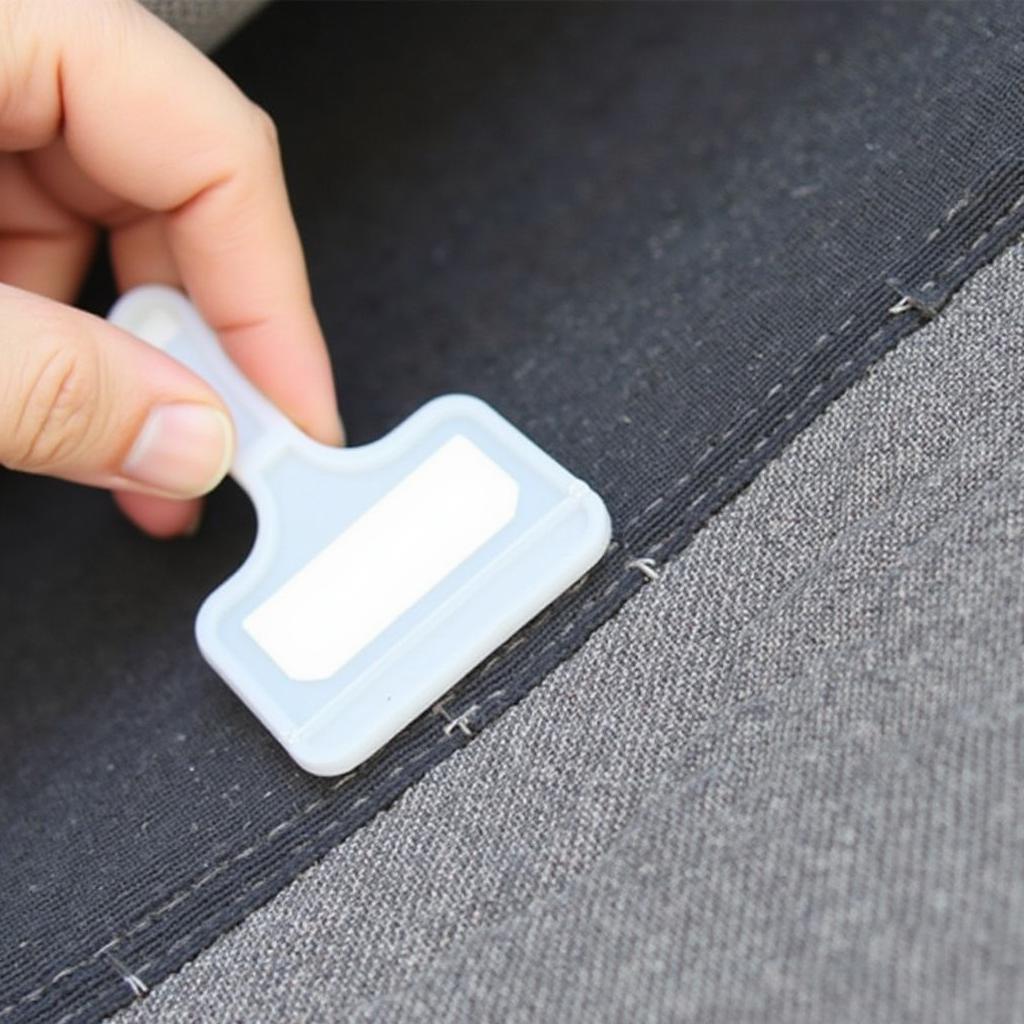 Repairing a tear in a fabric car seat with adhesive
Repairing a tear in a fabric car seat with adhesive
Tears in fabric car seats can vary in size and severity. Here are two common methods:
Method 1: Using a Fabric Repair Kit
- Clean the Area: Use a fabric cleaner or mild soap solution to clean the damaged area thoroughly, ensuring no dust or debris hinders adhesion. Allow the area to dry completely.
- Prepare the Patch: If the kit includes adhesive patches, cut a patch slightly larger than the tear, ensuring it covers the edges completely.
- Apply the Patch: Peel off the backing from the adhesive patch and carefully align it over the tear. Press firmly on the patch, ensuring good contact with the fabric.
- Seal the Edges (Optional): For added durability, you can apply a thin layer of fabric glue or sealant around the edges of the patch.
Method 2: Sewing the Tear
- Clean and Trim: Clean the area around the tear. If the edges are frayed, carefully trim any loose threads using sharp scissors.
- Thread the Needle: Choose a thread color that closely matches the fabric. Thread your needle with a length of thread, ensuring it’s long enough to complete the repair.
- Sew the Tear: Use a simple straight stitch to bring the edges of the tear together. Ensure your stitches are small and even to create a strong and less noticeable repair.
- Knot and Trim: Once the tear is closed, tie a secure knot at the back of the fabric and trim any excess thread.
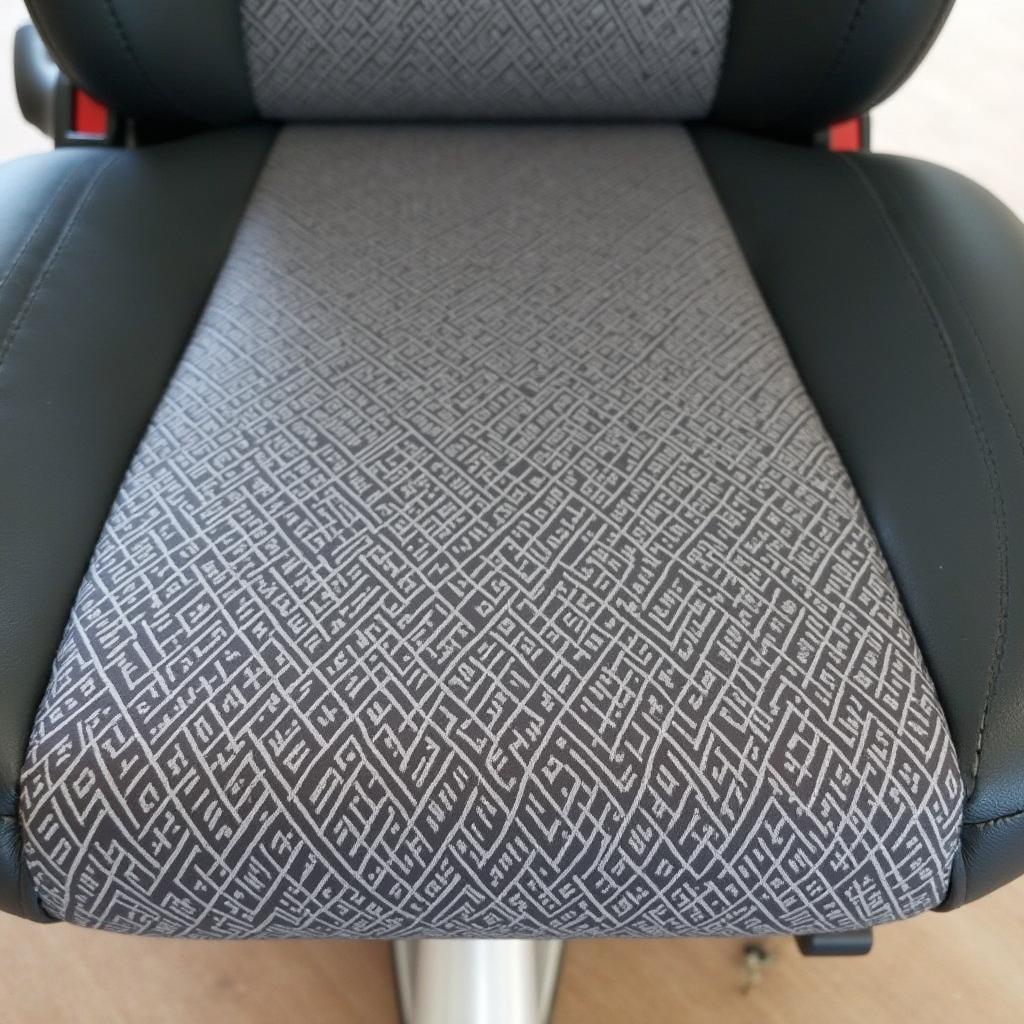 A fabric car seat after repair
A fabric car seat after repair
How to Repair Burn Holes in Fabric Car Seats
Burn holes are tricky to repair completely, but you can often improve their appearance:
- Assess the Damage: Determine the burn’s depth and size. Shallow burns might be addressed with fabric markers or fillers, while deeper ones might require patching.
- Clean the Area: Gently clean the burned area using a fabric cleaner or mild soap solution. Avoid scrubbing too hard as it might further damage the fabric.
- Apply Filler (Optional): For small burn holes, use a fabric filler to fill the cavity. Follow the product instructions for application and drying times.
- Color Matching: If using fabric markers or dyes, choose a color that closely matches the surrounding fabric. Apply the color carefully to the burned area, blending it outwards for a seamless look.
Addressing Stains and Fading
- Stains: Act quickly on fresh stains for easier removal. Blot the stain gently with a clean cloth to absorb excess liquid. Use a fabric cleaner or stain remover specific to the type of stain.
- Fading: Consider using a fabric dye to refresh the color of faded car seats. Choose a dye that closely matches the original color and follow the product instructions carefully.
Pro Tip from John Miller, Automotive Upholstery Expert: “Always test any cleaner, adhesive, or dye on an inconspicuous area of the fabric first to ensure colorfastness and prevent any unwanted reactions or damage.”
Preventing Future Damage: Preserving Your Handiwork
After putting in the effort to repair your fabric car seats, it’s wise to take steps to protect them from future damage. Here are some preventative measures:
- Regular Cleaning: Establish a routine of vacuuming and cleaning your car’s interior, including the seats, to prevent dirt and grime from settling into the fabric.
- Seat Covers: Consider using seat covers to provide an extra layer of protection against spills, dirt, and general wear and tear.
- Sunshades: Protect your car’s interior from harmful UV rays by using sunshades when parked in direct sunlight.
- Avoid Sharp Objects: Be mindful of sharp objects that could potentially tear or puncture the fabric.
Conclusion: Mastering DIY Car Seat Repair
Repairing a fabric car seat doesn’t always require a professional. By following the steps outlined in this guide and equipping yourself with the right tools and techniques, you can tackle common repairs with confidence and restore your car’s interior to its former glory. Remember, patience and attention to detail are key to achieving professional-looking results. While some extensive damage might require specialized expertise, taking the DIY approach can save you money and provide a sense of accomplishment. Car seat fabric repair is a manageable task for car owners of all skill levels, empowering you to keep your vehicle looking its best.
FAQs: Your Burning Questions Answered
Q1: Can I use super glue to repair a tear in my fabric car seat?
While super glue might seem like a quick fix, it’s not recommended for fabric car seat repairs. It can create a stiff and inflexible bond that can crack or peel over time, especially with the constant movement and pressure on car seats.
Q2: Where can I find fabric that matches my car’s interior?
If you need to patch a larger area and require matching fabric, your best bet is to contact your car’s manufacturer or visit an automotive upholstery specialist. They can often provide you with matching fabric scraps or direct you to a supplier.
Q3: How long does it take for fabric car seat repairs to dry?
The drying time for adhesives, fillers, and dyes varies depending on the specific product used. It’s crucial to refer to the product instructions for recommended drying times. As a general rule, allowing ample drying time in a well-ventilated area is essential.
Q4: Can I reupholster my car seats myself?
Reupholstering car seats requires specialized tools, skills, and experience. While it’s possible to do it yourself, it’s generally recommended to seek professional upholstery services for the best results.
Q5: How can I prevent my car seats from fading in the sun?
To minimize sun damage and fading, park your car in shaded areas whenever possible. Using sunshades on the windows when parked in direct sunlight can also help block harmful UV rays.
Still have questions about car seat repair?
Check out these helpful resources on our website:
- How to repair a tear in fabric car seat
- Car seat repair kit fabric
- How to repair burn holes in fabric car seats
Need personalized assistance?
Don’t hesitate to reach out to our team of car repair experts. Contact us via WhatsApp: +1(641)206-8880 or Email: [email protected]. We’re available 24/7 to assist you with all your car repair needs.

